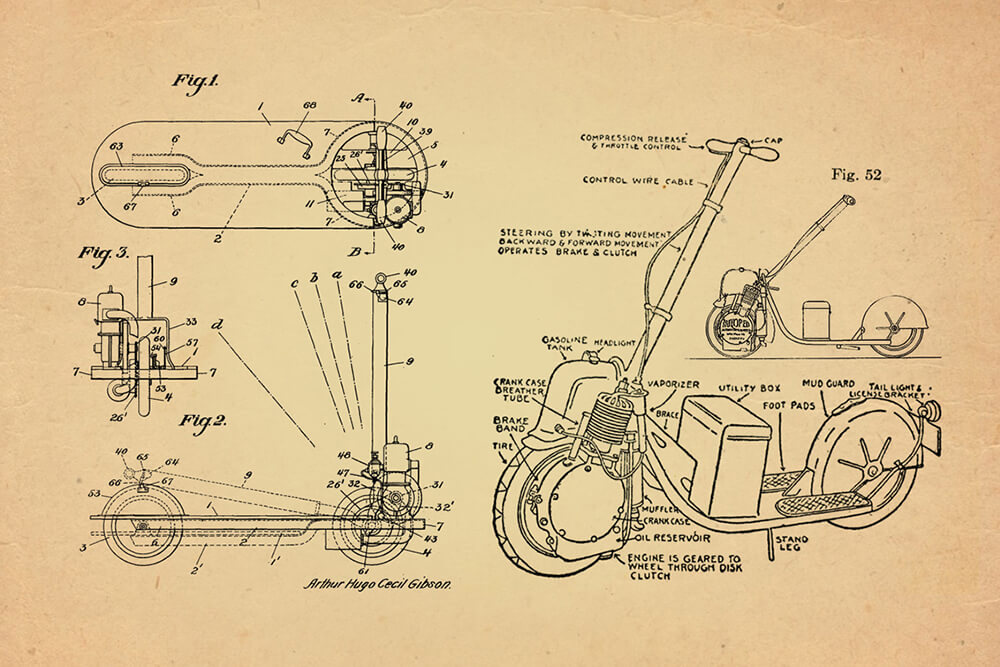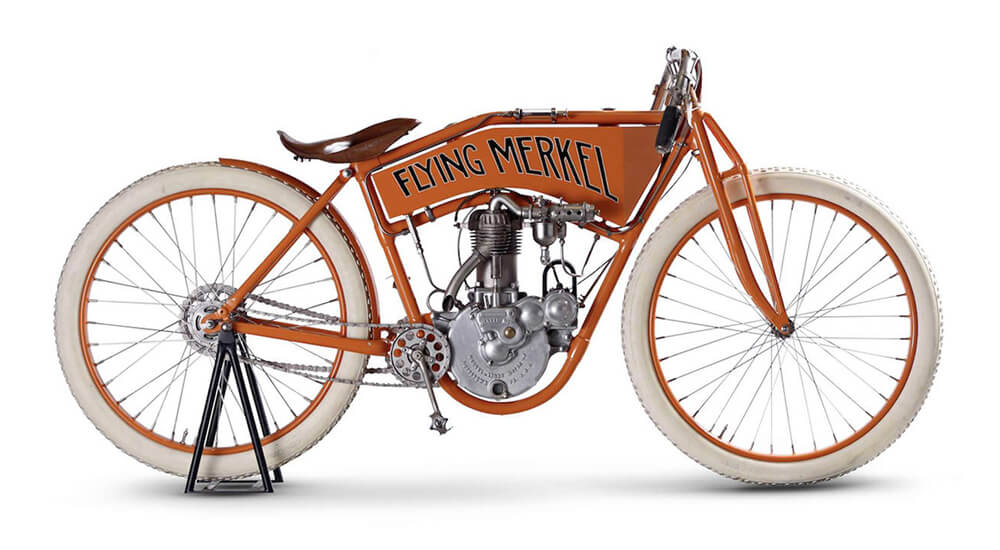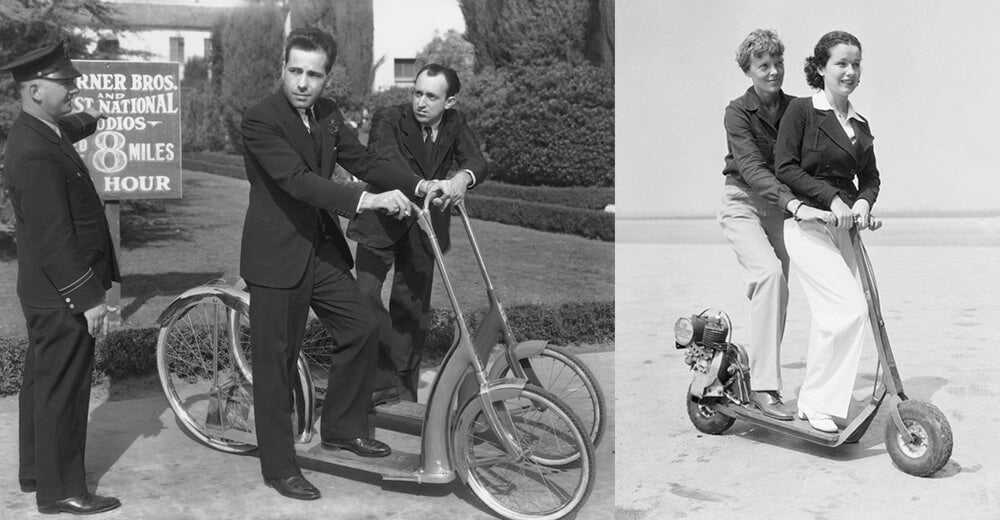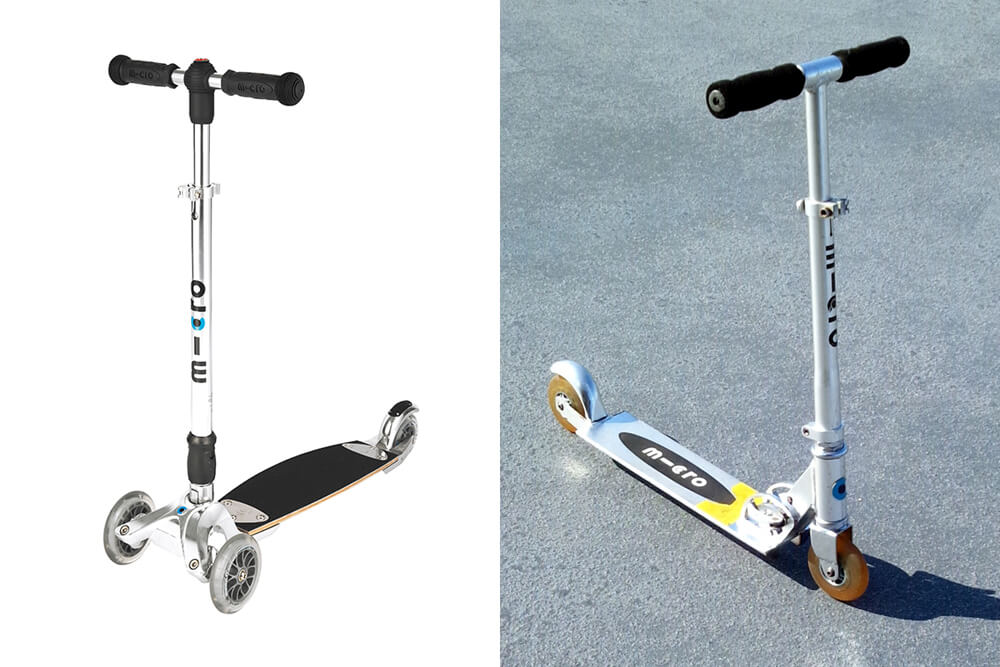Micromobility is here to stay, and it’s changing how we experience urban life for the better. With Unagi’s membership program, you can enjoy all the benefits of a top-tier electric scooter without the sky-high price of ownership or the inconvenience of ride-sharing.
Two wheels and a plank. It would be a modest beginning for a mode of transportation characterized by peaks and troughs in use and popularity unrivaled by any other contemporary human propellant. Although difficult to pinpoint, it is generally accepted that a malaise-stricken child of a late 19th century European metropolis connected a set of skate wheels to a plank base, ushering in an era of swift, upright-motion. Creating a sound no doubt louder than the electric scooters of today and delivering – most importantly – speed, the crude instrument became a source of joy for children in both Europe and the United States in the pre WWI era. Reliable information on corporate producers of wooden kick scooters during the vehicle’s nascency remains scant; however, any interested party is sure to stumble upon photos of early 20th century children racing manufactured scooters on city streets.

Constructions would be iterated on by both children and adults in the early 1900s, culminating in a jewel of WW1 era design, the Autoped. Manufactured by Long Island City’s The Autoped Company, the NYC born and bred device featured a robust frame, with a steering beam angled towards the rider at a near 45 degrees, and a curved base that foreshadows many of the popular art-deco automobile designs of the 1930s.


Schematics for the Autoped were patented and awarded to inventor Arthur Hugo Cecil Gibson in 1916, although it would seem that Joseph F. Merkel - creator of the Flying Merkel motorcycle - played a large hand in the Autoped’s completion.


The Autoped featured 10-inch tires and an air-cooled, 4-stroke, 155cc engine on its front wheel which could reportedly generate (unstable) speeds up to 35mph. The rider would push the steering mechanism forward to engage the clutch and apply force to a handlebar-lever to control speed. Pulling back on the steering column would disengage the clutch and activate the Autoped’s brake. Much like our electric scooter, the Autoped’s steering rod was collapsible for easy storage and transportation, and, perhaps most strikingly, one version featured an electric motor. The Autoped was manufactured between 1915 and 1919 in the States, and in Germany by Krupp from 1919 to 1922. Although the device did not gain widespread adoption, it can be seen peppered through black and white photos, ridden by US Postal service delivery men, traffic officers, and fixtures of high society.

Other companies would enter the scooter fray following the Autoped, prominent among them ABC Motorcycles, a British motorcycling outfit that sponsored several moto films of the early 20th century. In 1919, ABC chief engineer Granville Bradshaw developed the Scootamota, a seated, single-cylinder, 123cc rear wheel powered scooter with a top speed of 15mph that was manufactured between 1919 and 1922.

The 1930s would see an increase in the use of motorized scooters around military bases, airports, across urban areas, and even on Hollywood studio lots, and, in the 1940s, featured usage as a low-energy mode of transport during wartime fuel rationing.

Subsequent decades would witness an ebb and flow in the popularity of both standing and seated kick and motorized scooters, with a few brands throwing their hats into the production ring from time to time. In 1974, Honda created the Kick ‘n Go kick scooter and almost a decade later, Steve Patmont of Patmont Motor Werks invented and patented the Go-Ped.

Go-Ped kicked off a second, mini scooter revolution with a low-cost, fast, low-profile gasoline-powered scooter. Patmont originally started operations and production out of his garage in Pleasanton, California, and eventually expanded the family-managed business to a 70,000 square foot facility in Minden, Nevada. Still in business today, Go-Ped has expanded its line of scooters to include an electric standing scooter (2001) and varying propane based gokarts (2009). Although the success of Go-Ped’s original model brought startups world round into the motorized scooter market, it was the Razor that ignited a true consumer scooter frenzy in the mid 1990s.

It is an interesting debate whether Swissman Wim Ouboter invented his two-wheeled kick scooter out of laziness or industry. Ouboter’s favorite sausage stop, Zurich’s Sternen Grill (famed for its bratwurst) was too far to walk to, but close enough that he didn’t feel it warranted the trouble of a bike ride. Maybe sloth and productivity are two sides of the same coin, or maybe, more likely, one propels the other; whatever the case, Ouboter’s gastronomic dilemma would lead to the creation of one of the biggest worldwide product crazes of the early 2000s.

Ouboter worked out a prototype for a lithe, two-wheeled scooter that didn’t appeal to his friends, but caught the eye of automobile manufacturer Smart, which tentatively agreed to stock the creation in each of its cars. To Outboter’s dismay, Smart’s attention turned to internal struggles, and his sleeping giant was relegated to the attic. Although his first creation became an afterthought, Outboter kept tinkering, and created a three-wheeled version - the Kickboard - which he debuted in association with American sporting goods company K2 at the International Sports Fair in Munich in 1998. The success of the Kickboard precipitated the launch of Outboter’s Micro Mobility Systems in 1999 which manufactured his original two-wheeled concept. Demand for the scooter was so high, that Outober allowed his Taiwanese production partner to distribute the scooter to the United States for a commission under the name “Razor.”

The Razor quickly became a worldwide phenomenon, selling one million units in 2000 alone. Although fanfare for the scooter slid throughout the early 2000s, the brand continued to iterate on its original concept, creating different colored wheels, sparking elements, and - in competition with Go-Ped - a motorized, electric version.
The mid-2000s saw a decade long ebb in the popularity of scooters save for the media generated by an unusual, electric, self-balancing, two wheeled device called the Segway. Developed by Dean Kamen from Plymouth University’s “iBOT” self-balancing wheelchair design, the Segway PT was the subject of a massive wave of anticipation prior to its 2001 release. Fueled by a book, an information leak, and early, speculative praise from a number of tech visionaries - including Bill Gates - the bar for the Segway PT was set perhaps untenably high. Although Segway continued to produce iterations on its first model, the buzz around micro mobility faded for some time, until American businessman Shan Chen launched a Kickstarter campaign to raise funds for his self balancing Hoverboard.

A hit with celebrities, the Hoverboard gained worldwide popularity in 2015 and spun off a near incalculable amount of copy-cats, but its fanfare would come into contest with the arrival of the dockless, share-riding scooters of present day. The rest, as it were, is in present view. Bird, Lime, and a horde of share based electric scooters - including the millennial dominator, Razor - line the streets and alleyways of contemporary urbanity.

As a contrarion option to the wasteland of the shared experience, Unagi seeks to make the ownership of the electric scooter a more practicable, efficient, and glamorous proposition than was levied by the Go-Peds and Razors of the early 2000s and the Autoped models on the 1910s. With over a century of technological advancement, the modern, owned electric scooter is able to provide its rider with a lighter, faster, longer, and smoother ride.

The Unagi E450 dual motor electric scooter is a lightweight aluminum and carbon fiber cruiser with a 15.5 mph max speed, electrical brakes, and an instant maximum power of 900W. You don’t tie a prize-winning dog to a street sign, and neither do you an Unagi. Made to be ridden, folded, and brought into your favorite sushi bar, our creation is an ode to over one hundred years of technological and aesthetic progress across scooter categories. With continued efforts in research and development, the entire team at Unagi can’t wait to write another page in the not-so-brief history of the scooter.


Stay current with the latest U.S. electric scooter laws in our 2025 guide. Updated annually since our first comprehensive guide, ensuring you have the most recent state and city regulations to ride responsibly”

The Slack Core 920R is currently the fastest electric scooter in 2025 that you can purchase without the need for pre-order.

Our selection of the best electric scooters 2025 spans the fastest e-scooters to the most portable ones, the ones designed for city riding and off-road, the best scooters for rain, budget electric scooters for students, and more powerful ones for skilled riders.

The Unagi Voyager is the best lightweight electric scooter for adults and teenagers. It is the ultraportable sequel to its predecessor, the Unagi Model One Classic.

If you're wondering whether an electric scooter with a seat is right for you, this is a detailed article that would suit your need.

Understand which personal electric vehicle is best, the choice between an electric bike or electric scooter might already be made for you by some critical factors, including portability and storage capacity.

In the U.S., most states don't require a license. For those that do, they usually just ask for a regular driver's license or a learner's permit.

Yes, you can bring an electric scooter on a plane, but it needs to have a lithium battery smaller than 100 watt-hours, which most don't.

Manufacturers advise against riding electric scooters in the rain. The main reasons are: water can fry the electronics, make the ride dangerous, and void your warranty.

The basis and the premise of my work is that we either operate out of love or we operate out of fear...Time is currency. The coolest thing about the scooters is that it's really quick, and it goes uphill. From there, traveling more efficiently and having a good time doing it--I think that's the most important thing.

Cynthia Leu has a full plate. A tech worker by day, Cynthia spends her off time balancing the parallel lives of a powerlifter, entrepreneur, mental health advocate, and more. Riding Unagi helps this USMC veteran cut down on everyday…

https://www.youtube.com/watch?v=7m2hVBE62LY Rasheed Muhammad is sick of Los Angeles traffic. In order to preserve his sanity, Rasheed has traded his everyday driving habit for the portable and beautiful Unagi Model One. It’s an essential accessory for navigating LA streets -- and…

Rich Lee, Co-Founder of San Francisco’s SPRO Coffee Lab, wants to share his love for coffee with the world. He depends on riding Unagi to avoid the hassle of navigating the parking crunch in the booming Mission Bay neighborhood.…










